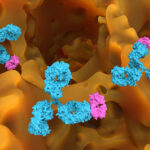
Credit: Marcin Klapczynski/Getty Images
By studying what happens when macrophage immune cells encounter dying cancer cells in tumors, scientists at Nagoya University have discovered a mechanism that accelerates tumor growth.
When cancer cells begin to die within tumors, they expose signals on their surface that indicate they are dying. Macrophages then detect these signals and engage in phagocytosis, where they eat the dying cancer cells. Using Drosophila fruit flies as a model organism, the scientists found that this triggers production of specific cytokines, which activate growth signals in remaining cancer cells.
These cells then produce more cytokines, causing an unexpected chain reaction that promotes tumor growth. Headed by Professor Shizue Ohsawa, PhD, at Nagoya University’s Department of Biological Science, the team showed that blocking this pathway, by preventing the macrophages from phagocytosing dying cancer cells or by stopping cytokine production, significantly reduced tumor growth.
Ohsawa noted that targeting this interaction between macrophages and dying cancer cells could be a new way to treat cancer in humans: “Because the molecular pathways between fruit flies and humans are evolutionarily preserved, understanding these mechanisms could explain why some cancers with high cell death rates can still grow aggressively and lead to improved treatments.”
Senior author Ohsawa, together with first author Eri Hirooka, a PhD student at the Graduate School of Science at Nagoya University, and colleagues, reported on their study in Current Biology, in a paper titled “Macrophages promote tumor growth by phagocytosis-mediated cytokine amplification in Drosophila.” In their paper the team concluded, “Our findings reveal a novel mechanism of non-autonomous tumor progression, whereby dying oncogenic cells activate the phagocytic function of macrophages, traditionally regarded as a tumor-suppressive mechanism.”
The complex interactions between cancer cells and stromal cells in the tumor microenvironment, including inflammatory cells, immune cells, and fibroblasts, are increasingly recognized as key drivers of tumor progression, the authors noted. Among these stromal cells, tumor associated macrophages (TAMs) represent the main group of phagocytic immune cells. “Their presence correlates with tumorigenesis, limited therapy response, and poor prognosis in most solid tumor types, yet the causal mechanisms remain unclear,” the team wrote.
The cellular immune system in Drosophila mainly comprises hemocytes, the most abundant subtype of which are plasmatocytes, described by the authors as professional phagocytic cells that, similar to macrophages in vertebrates, “engulf microbes, cellular debris, and foreign bodies, and also initiate humoral immune responses by secreting inflammatory cytokines.” And similarly to mammalian TAMs, the team pointed out, hemocytes have been shown to promote neoplastic tissue growth in Drosophila. “However, the mechanisms by which oncogenic cells cause hemocytes to exert non-autonomous influences, thereby driving tumor growth, remain largely elusive.”
For their reported study the team turned to genetically modified Drosophila. “We used genetically modified fruit flies to study cancer because their immune system is similar to ours, and they offer a powerful model system for research in the laboratory,” Hirooka said. “We created tiny tumors in their eye tissue and used fluorescent markers to track cancer cells and macrophages in real-time under microscopes.”
To understand how these cells interact, the researchers turned genes on and off, added or removed specific proteins, and measured the effects on tumor growth. They observed macrophages consuming dying cancer cells and measured the cytokine signals being produced during this process.
They discovered what they described as “unexpected cell-cell interactions” between mature phagocytic plasmatocytes and oncogenic RasV12/scrib cells, a well-established Drosophila model of malignant tumors. Their studies showed that when macrophages in fruit flies consume dying cancer cells, they produce an inflammatory cytokine called Upd3, a protein similar to human IL-6. This Upd3 activates JAK and STAT proteins inside living cancer cells.
These proteins normally coordinate immune responses and tissue repair, but cancer cells hijack this process: They turn on genes that make them produce their own Upd3, enhancing JAK and STAT activation and promoting tumor growth. “We observed that mature plasmatocytes phagocytose caspase-activated RasV12/scrib cells within these tumors,” they wrote. “Notably, through this phagocytic interaction, mature plasmatocytes secrete the inflammatory cytokine Upd3, thereby inducing the expression of upd genes and the activation of JAK/STAT signaling in RasV12/scrib tumors, ultimately promoting their growth.”
![When cancer cells die, macrophages consume them and produce inflammatory cytokines. This activates JAK and STAT proteins in living cancer cells, enabling them to produce their own Upd3 and creating a growth-promoting feedback loop in fruit flies. [Eri Hirooka, Nagoya University]](https://www.genengnews.com/wp-content/uploads/2025/06/low-res-15-300x108.jpeg)
The researchers then found that when they genetically decreased the macrophages’ ability to consume dying cancer cells, or decreased Upd3 production, tumor growth was significantly reduced. The results challenge the assumption that enhancing immune cell phagocytosis is always beneficial in cancer treatment—many therapies aim to boost immune cell activity, but this research shows that could backfire.
The results indicated that cancer cells are more cunning than expected. Instead of just receiving growth signals from immune cells, they actively boost those signals by producing their own Upd3. The findings, the team noted, suggest that RasV12/scrib tumors co-opt this conserved cytokine amplification mechanism, which is normally activated during infection, tissue repair, and regeneration, to accelerate their own growth. “Such ‘hijacking’ of an immune-regulatory mechanism may represent a critical strategy for tumor progression, driven by complex interorgan communication.”
This mechanism may be universal across species because the dying cancer cells that start the whole process are commonly found in tumors, especially in advanced cancers.


